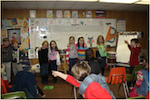 I was recently browsing some forums online and found a description of this game by a music educator. It sounds like a great game to use with large groups of students — perhaps for group lessons or summer camps. I asked the music educator if I could post about the game on my blog, and she kindly agreed. In her own words: “You certainly have my permission to share the game. I made it up, but someone else probably has, too. We all get ideas from one another and put them together in different ways.” I love her attitude and generosity! We teachers have so much we can share and learn from each other.
I was recently browsing some forums online and found a description of this game by a music educator. It sounds like a great game to use with large groups of students — perhaps for group lessons or summer camps. I asked the music educator if I could post about the game on my blog, and she kindly agreed. In her own words: “You certainly have my permission to share the game. I made it up, but someone else probably has, too. We all get ideas from one another and put them together in different ways.” I love her attitude and generosity! We teachers have so much we can share and learn from each other.
This composing/rhythm game is appropriate for groups of about 8 or more students. All you need are 4 pieces of paper with the numbers 1, 2, 3, and 4 written on them. These sheets serve to mark the beats of the measure, spaced out on the floor. One student is chosen as the Composer, who must select students and make them into quarter notes/half notes/whatever. Once the measure is complete, everyone claps the rhythm and the teacher records the rhythm onto a whiteboard to save it. A new Composer is chosen to compose the next measure. In the end, everyone claps the entire rhythmic composition to see what it sounds like.
I haven’t tried out this game yet, but it sounds fun! And it’s not always easy to find games that work for large groups of students. I just might try out this game at my studio Christmas party coming up. 🙂
Complete game instructions can be printed by downloading the pdf on the Printables > Games page. I thought the game needed a more specific title, so I came up with “Make Me A Rhythm!”




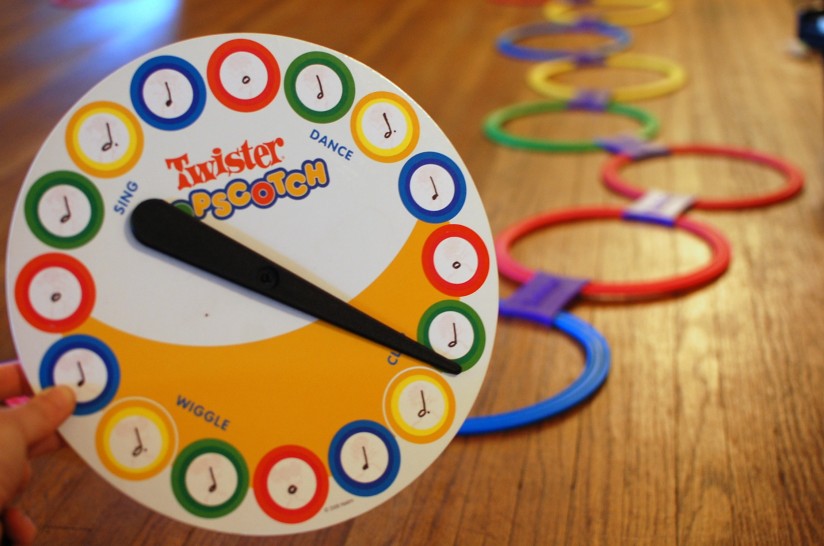
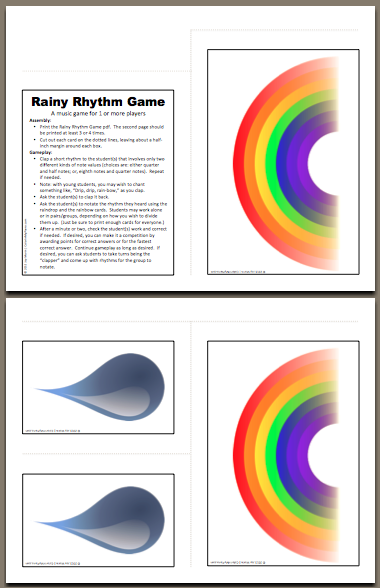
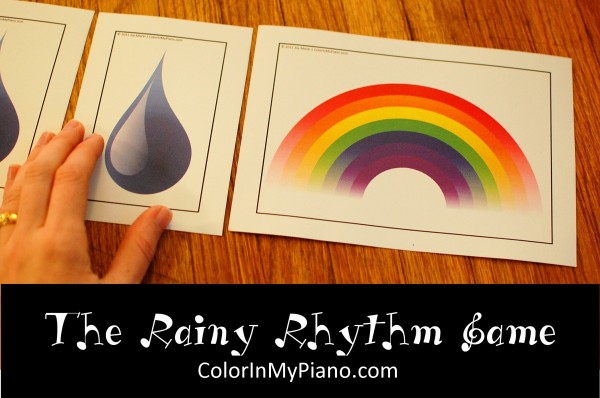


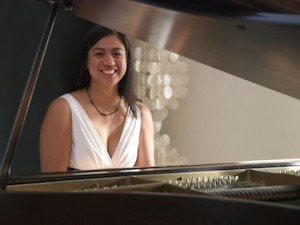
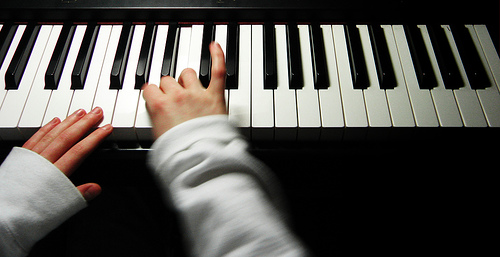

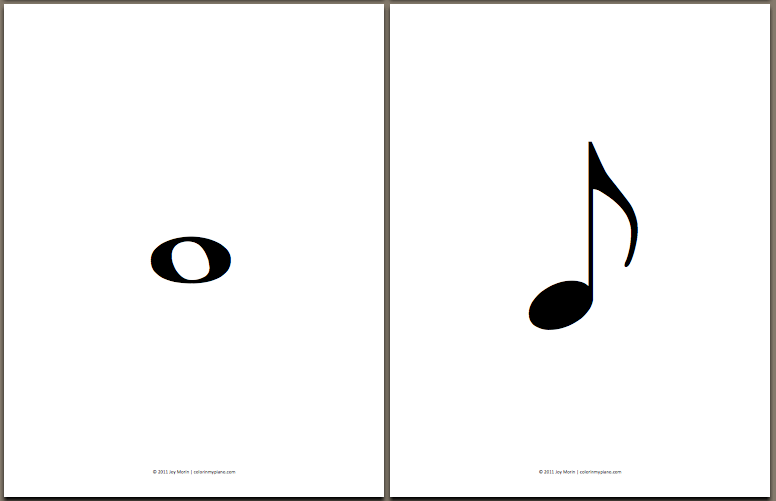
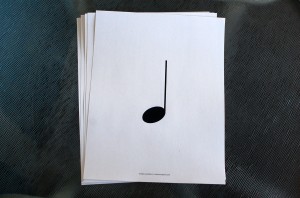 Here’s a fun movement/rhythm game to play with a group of students which I learned from a Dalcroze Eurhythmics instructor. I call it the “Rhythm Magnet Game.”
Here’s a fun movement/rhythm game to play with a group of students which I learned from a Dalcroze Eurhythmics instructor. I call it the “Rhythm Magnet Game.”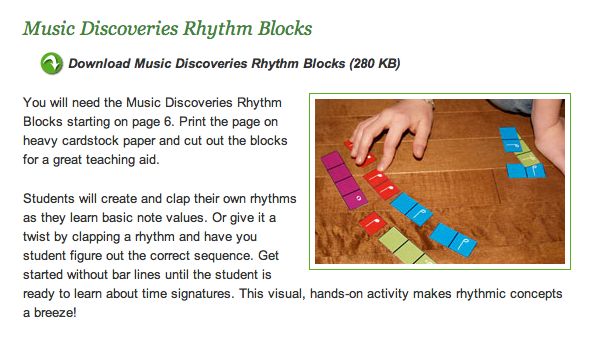
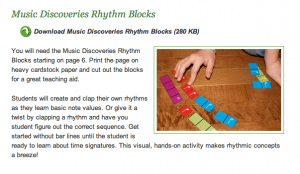 My colleague Loretta and I have been teaching a pair of beginner students in a group setting each week. Last week, we were learning about 3/4 and 4/4 time, and quarter notes and half notes. Loretta and I wrote rhythms on the whiteboard, asked the students to help us write in bar lines, and then clapped and counted the rhythms together. While this activity worked and was beneficial, what we did this week was much more successful.
My colleague Loretta and I have been teaching a pair of beginner students in a group setting each week. Last week, we were learning about 3/4 and 4/4 time, and quarter notes and half notes. Loretta and I wrote rhythms on the whiteboard, asked the students to help us write in bar lines, and then clapped and counted the rhythms together. While this activity worked and was beneficial, what we did this week was much more successful.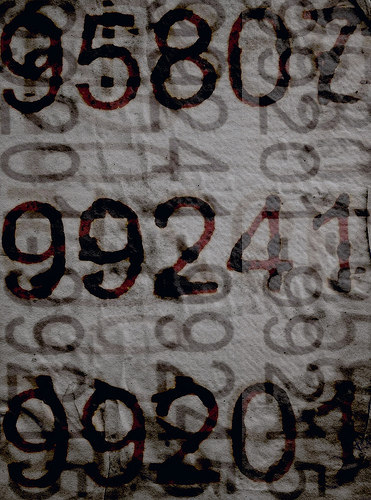
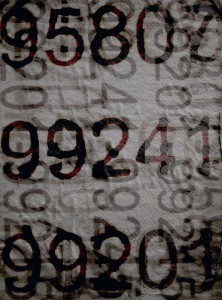 At the 2010 Michigan Music Teachers Assocation conference this weekend, our conference clinician Martha Hilley had some wise words for us that I thought I’d share here:
At the 2010 Michigan Music Teachers Assocation conference this weekend, our conference clinician Martha Hilley had some wise words for us that I thought I’d share here:
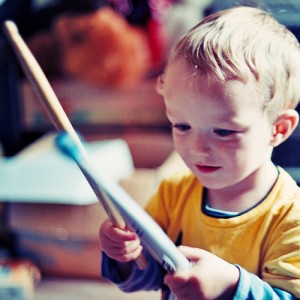 Developing a good sense of rhythm is one of the most challenging parts of being a piano teacher. It’s not something that arrives overnight, and it’s something that must be maintained as the student advances to music with more advanced rhythms and time signatures. It truly is something that must be developed.
Developing a good sense of rhythm is one of the most challenging parts of being a piano teacher. It’s not something that arrives overnight, and it’s something that must be maintained as the student advances to music with more advanced rhythms and time signatures. It truly is something that must be developed.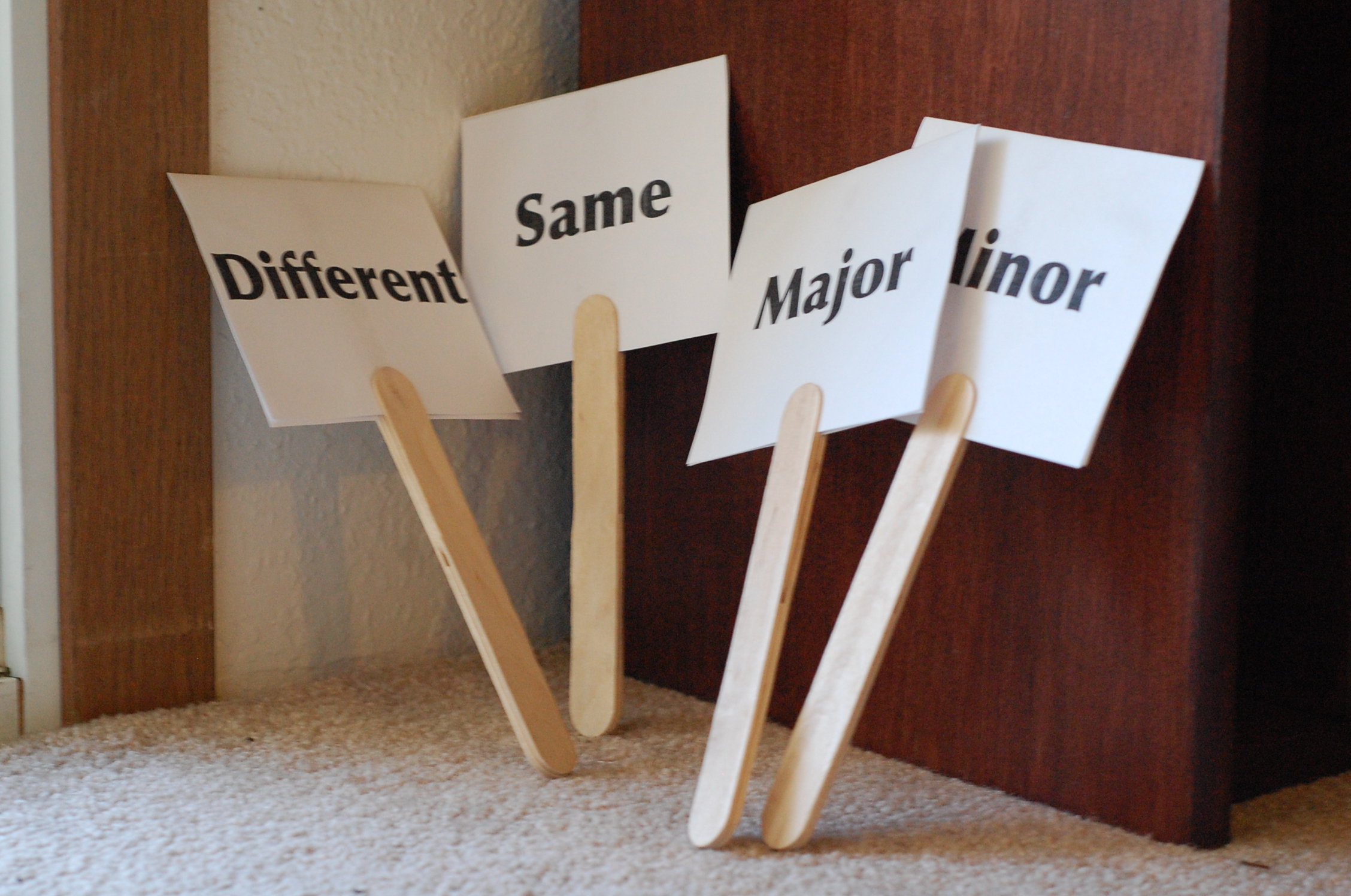
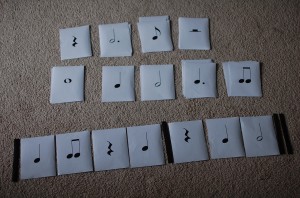 Rhythm Dictation Game
Rhythm Dictation Game